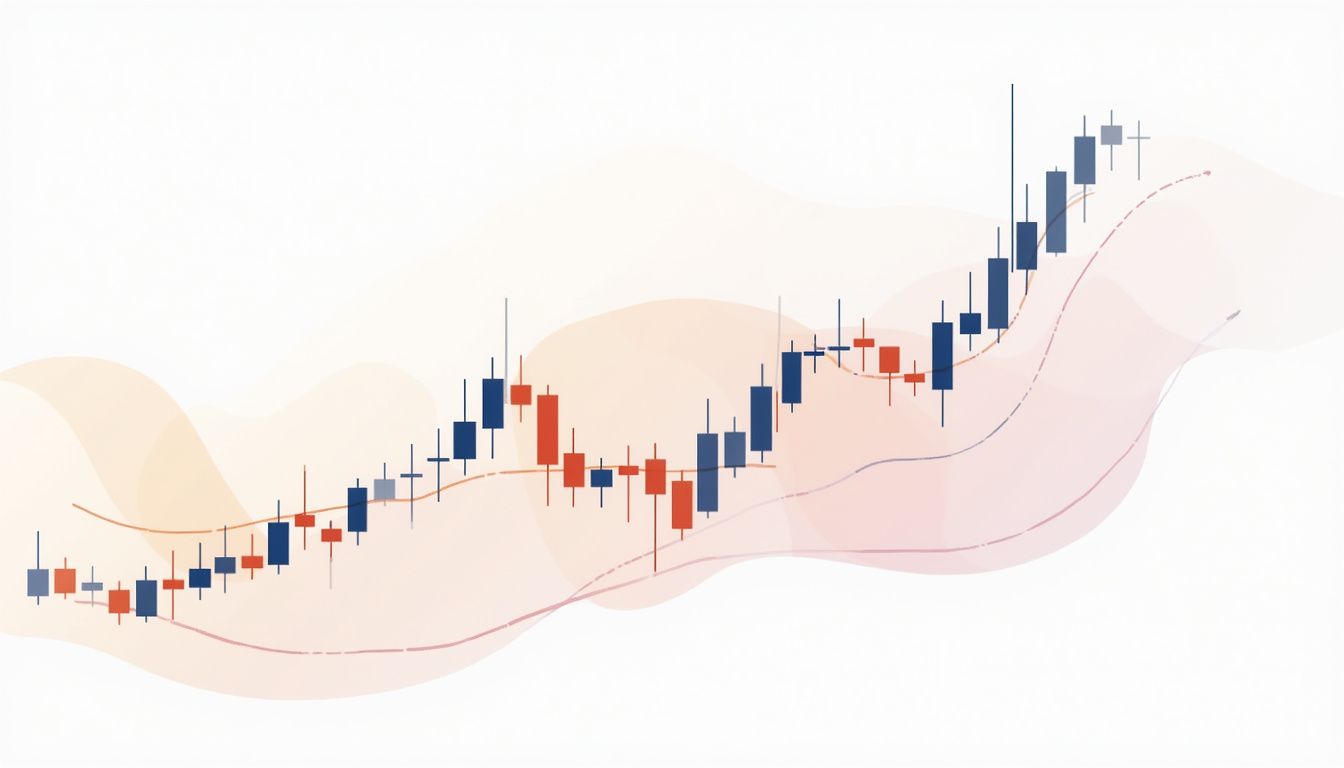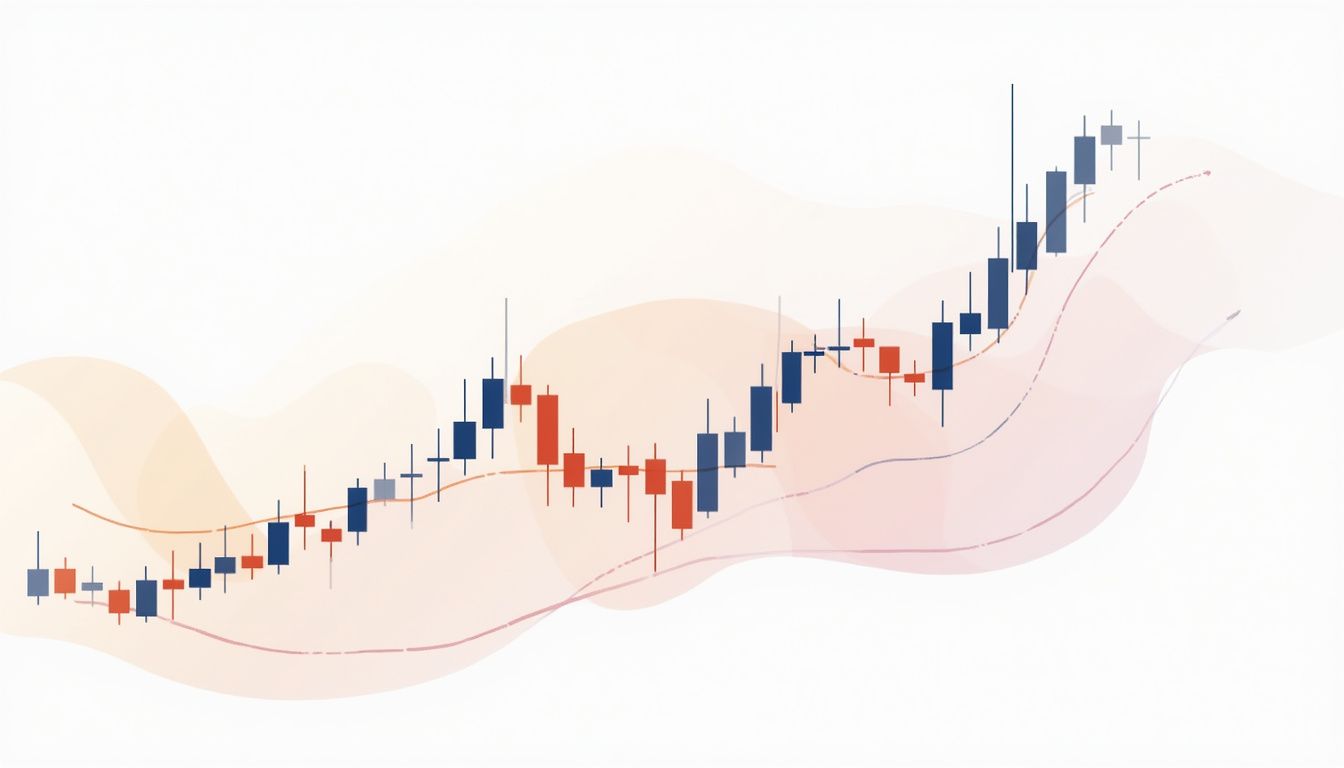

Are you struggling to understand market trends in forex trading? Knowing what is an order block in forex can help you spot potential price movements and improve your strategies. This guide will break down the key points, making it easier for you to identify and use order blocks effectively.
Keep reading to gain clarity on this powerful concept.
 Order blocks in forex mark price levels where institutional traders place large buy or sell orders. These levels often trigger significant price movement due to the volume involved.
Order blocks in forex mark price levels where institutional traders place large buy or sell orders. These levels often trigger significant price movement due to the volume involved.
Instead of executing massive trades all at once, banks and hedge funds break them into smaller chunks to avoid disrupting the market price. This process creates areas of consolidation on a price chart, which later act as support or resistance levels.
These blocks help you predict future market sentiment and potential breakout points. For example, if a bullish order block forms during an uptrend, it may signal continued buying pressure after a temporary pullback.
Spotting these zones can enhance your technical analysis by identifying strategic entry or exit points for your trading strategy.

Order blocks reflect the behaviour of institutional traders and large-scale market participants. They often occur near significant support and resistance levels, marking areas where buy or sell orders concentrate.
Large order sizes create supply and demand imbalances, forcing price movements. For example, buy orders can drive a bullish trend by pushing prices higher. Sell orders, on the other hand, lead to bearish trends as they pull prices downward.
These blocks exhibit defining traits such as liquidity sweeps and inefficiencies in price action trading. Liquidity sweeps happen when markets capture stop loss levels before reversing direction.
Unmitigated conditions highlight zones where market reaction has not yet corrected previous imbalances. Invalid order blocks pose risks as they fail to show meaningful signals or price reactions on charts like candlestick charts or pivot points analysis tools.
Identifying these characteristics helps you gauge market sentiment effectively while avoiding false trades in volatile forex markets.
Order blocks come in distinct forms, each shaping price movements and offering unique trading opportunities.
Bullish order blocks represent strong buying interest in the foreign exchange market. These blocks often act as a support level, showing areas where institutional traders placed large buy orders.
Such zones indicate potential upward price movements and suggest a shift in market sentiment favouring buyers. You can spot these on a price chart during the consolidation phase before significant bullish trends emerge.
Look for sharp price reactions away from these levels that highlight their strength. Combine technical indicators like moving averages or volume indicators with bullish order blocks to confirm trend continuation opportunities.
Identifying such zones helps optimise your trading strategies for better entry points while managing risks effectively.
Next, explore bearish order blocks to understand how they signal selling pressure in forex trading.
Like bullish order blocks signal upward price movement, bearish order blocks indicate potential downward trends. These areas mark significant selling pressure created by institutional traders.
They act as resistance levels on the price chart and often suggest a market sentiment shift to short positions.
You can identify these blocks in consolidation phases where prices fail to break higher before dropping sharply. A typical bearish order block shows strong rejections at resistance levels followed by lower lows.
Use tools like moving averages or volume indicators to confirm validity and improve your technical analysis.
Learn to spot order blocks by analysing price charts, studying market structure, and observing price action for signs of strong institutional activity.
You need reliable tools and indicators to identify order blocks in forex trading. These help you pinpoint potential price movements and refine your trading strategies.
Tools and indicators help you spot potential order blocks, but not all are reliable. Valid order blocks show clear signs, such as liquidity sweeps or imbalances in price movement. These traits suggest institutional traders have entered the market, leaving trading gaps that signal strong activity.
Invalid order blocks often lack these crucial features. Weak price reactions on retests or absence of trading inefficiencies make them riskier to trust. Without visible evidence like unmitigated conditions or significant shifts in market structure, they can mislead your trades.
Focus on identifying those tied to robust support and resistance levels for better results.
Use order blocks to refine your trading strategy by pinpointing precise entry points and managing risks effectively.
Defining clear entry and exit points is crucial in forex trading. Proper planning minimises risk and maximises profits.
Understanding these steps ensures your trades align with both market structure and trading strategies for consistent results.
Effective entry and exit points are critical, but managing risks is equally essential in forex trading. Using structured risk management techniques helps reduce losses and protect your capital.
Using order blocks in forex trading can be profitable if done correctly. Still, many traders make errors that cost them money and time.
Order blocks play a key role in understanding market structure and price action. You can use them to spot support and resistance levels or find possible breakout zones on the price chart.
Learning to identify valid order blocks makes trading strategies more precise and practical. Apply tools like volume indicators or moving averages for better accuracy, but always follow sound risk management rules like using stop loss orders.
Think about how these methods can refine your approach and protect you from costly mistakes. Stay consistent, analyse your trades carefully, and trust that mastering this concept will improve your forex trading decisions over time.
For further insights into how currency indices play a crucial role in forex trading, especially for understanding market trends, visit our comprehensive guide on the DXY index.
An order block in forex trading refers to a price zone where institutional traders place large limit orders, causing significant price movement and influencing market structure.
A bullish order block signals potential upward price action, often found near support levels. A bearish order block suggests downward price movement, typically forming around resistance levels.
Order blocks help traders identify key areas of market sentiment, allowing them to refine their trading strategies by focusing on zones with high probability for price reaction or reversal.
Yes, tools like moving averages, pivot points, and volume indicators can complement technical analysis by confirming the consolidation phase or trend-following patterns linked to order blocks.
Risk management involves placing stop-loss orders near identified rejection or vacuum blocks to minimise losses during high market volatility while maintaining control over trades.
Understanding order blocks applies across financial markets including foreign exchange (forex), CFD trading, altcoins, tokens, and day trading due to their impact on market structure and price action trends.